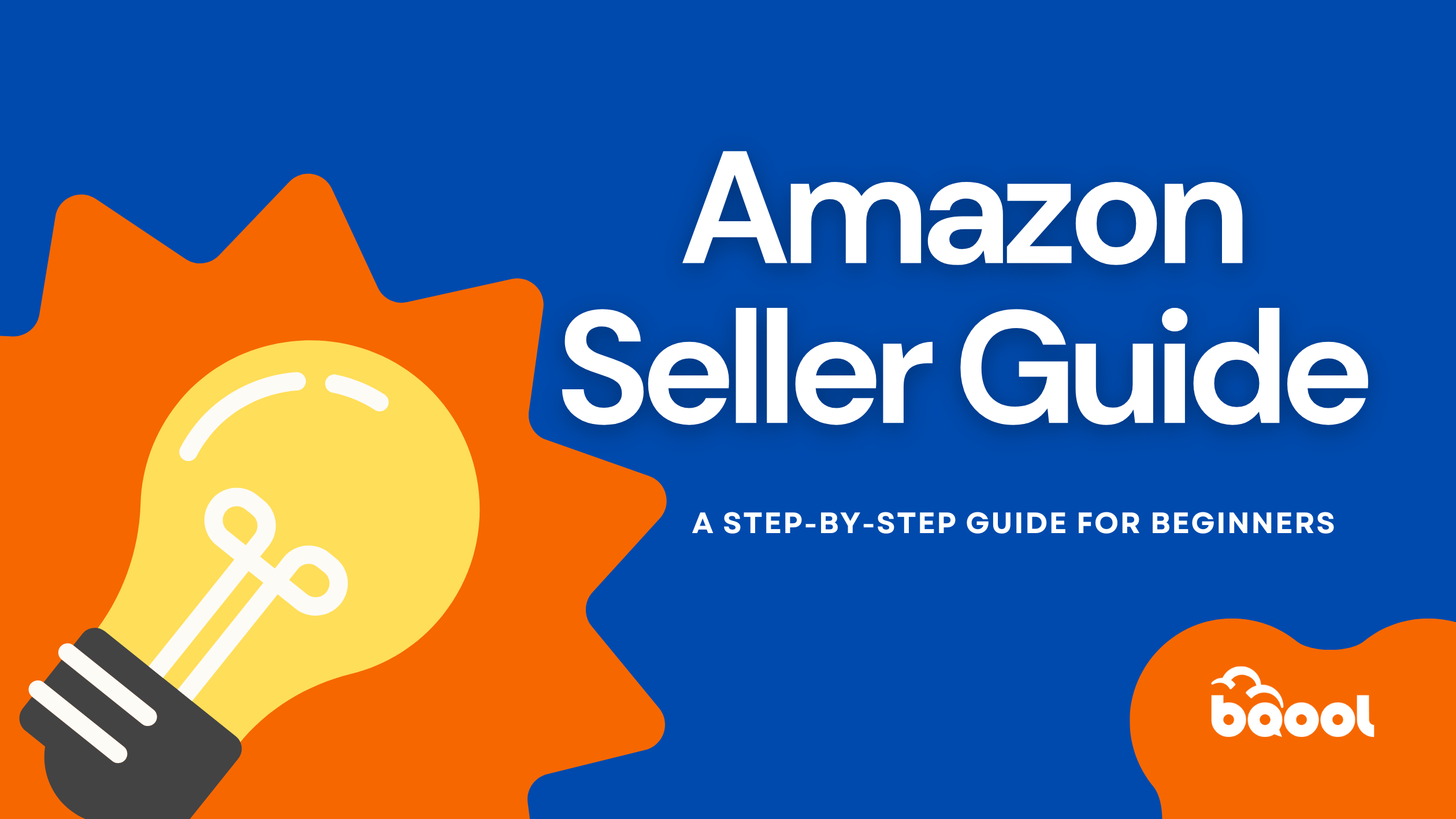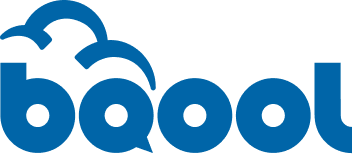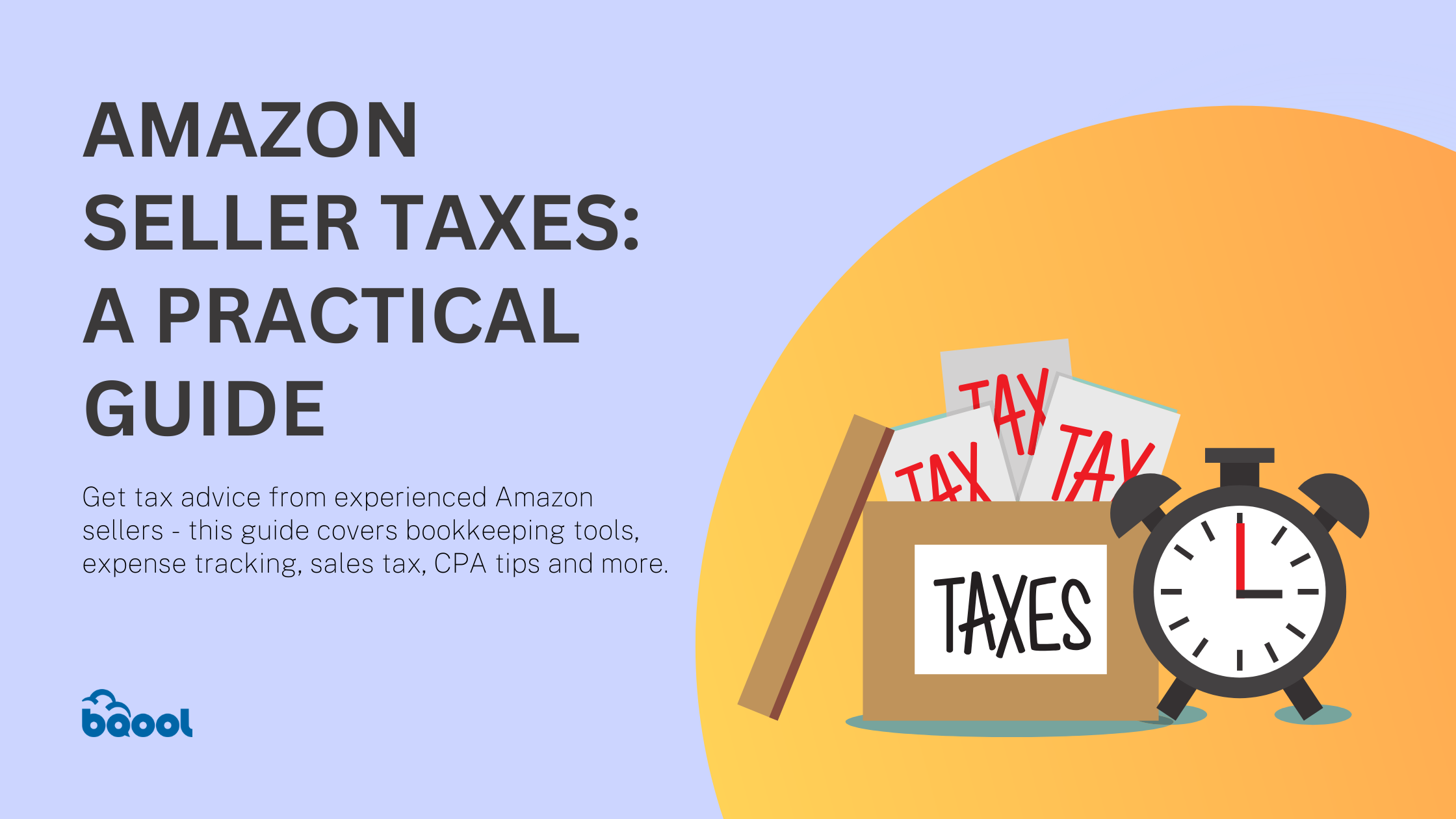How to Sell on Amazon: Complete Beginner’s Guide

Ready to start selling on Amazon? This amazon seller guide walks you through everything, from choosing your business model and setting up your seller account to mastering PPC advertising and optimizing your listings for maximum visibility.
Whether you’re a complete beginner or looking to scale your existing business, you’ll find actionable strategies, real-world examples, and expert tips to help you succeed on the world’s largest e-commerce platform.
Overview
Why Sell on Amazon?
Amazon dominates 39.5% of global e-commerce sales and generated $491.65 billion in revenue in 2024. With over 9.7 million active sellers and 200+ million Prime members worldwide, the opportunities are massive.
What makes Amazon particularly attractive:
- Built-in trust: Customers shop with confidence knowing they’re protected by Amazon’s policies
- Massive reach: Over 310 million customers worldwide, with 80% based in the US
- Infrastructure: Amazon handles storage, shipping, and customer service with FBA
- Prime advantage: Products become eligible for Prime’s 2-day shipping
- Mobile presence: Over 150 million monthly mobile users access your products 24/7
Regional Distribution: The US leads with 1.9 million sellers (37.82%), followed by UK (281k, 9.54%), Germany (244k, 8.30%), Italy (217k, 7.36%), and France (212k, 7.19%).
Many new brands stumble early, if you’d like to prepare better, read about the top challenges new Amazon sellers face and how to avoid them.
Choosing the Right Amazon Business Model
Your business model determines how you source products and operate on Amazon. Consider these factors when choosing:
- Accessibility: How easy it is to start
- Profitability: How quickly you can generate profit
- Viability: Long-term sustainability and risk management
- Competitiveness: Level of market competition
1. Private Label
Source unbranded products from manufacturers and rebrand them under your own label. You create your own brand identity with complete control over pricing and product development.
Benefits:
- Brand ownership and pricing control
- Higher profit margins (25-40%)
- Customer loyalty potential
- Expansion opportunities beyond Amazon
2. Wholesale
Purchase products in bulk from distributors at discounted prices, then resell on Amazon. Focus on established brands with existing demand.
Key advantages:
- Established product demand
- Predictable inventory management
- Built-in brand recognition
- Consistent reorder opportunities
3. Retail Arbitrage
Buy discounted products from retail stores and resell at higher prices on Amazon. Great for beginners with minimal upfront investment.
Best for: New sellers, testing markets, learning the platform
4. Online Arbitrage
Similar to retail arbitrage but sourcing happens online from sites like Walmart.com or Target.com. More scalable than retail arbitrage.
Essential tools: Price comparison software, deal-finding extensions, virtual assistants, automated repricing.
To support your operations, consider exploring the best tools & services for Amazon resellers that can automate product sourcing and pricing.
5. Dropshipping
Act as middleman between supplier and customer without holding inventory. Supplier ships directly to customers.
Workflow: Customer orders → You forward to supplier → Supplier ships → You pocket the difference
6. Handmade
Sell unique, handcrafted items through Amazon’s curated Handmade community. Perfect for artisans scaling their craft business.
Advantages: Direct customer connection, lower competition, higher perceived value, strong storytelling opportunities
If you’re new to Amazon and want a very clear step-by-step process, you can also check our article on how to get started selling on Amazon for beginners.
Setting Up Your Amazon Seller Account
Individual vs Professional Account
Professional Account ($39.99/month):
- No per-item fees
- Access to advanced tools and bulk listings
- Amazon PPC advertising
- Buy Box eligibility
- No charge if no active listings that month
Individual Account ($0.99 per item):
- No monthly fee
- Best for under 40 items/month
- Limited features and reporting
- No advertising access
Required Documents
- Government-issued ID or passport
- Tax information
- Bank account or credit card statement
- Chargeable credit/debit card
- Mobile phone
Setup Steps
- Visit Amazon Seller Central and click “Sign Up”
- Choose Individual or Professional account
- Submit required documents for verification
- Link your bank account for payouts
- Explore the dashboard and Seller University resources
Start strong by knowing how to create your Amazon seller account, the correct plan and registration make a difference.
FBA vs FBM: Which Fulfillment Method?
Fulfillment by Amazon (FBA)
Amazon stores, packs, ships, and handles customer service for your products.
Advantages:
- Prime badge eligibility
- Higher Buy Box winning chances
- Time to focus on growth
- Amazon’s world-class logistics
- Scalability during peak seasons
Best for: Small, lightweight, high-demand products with healthy margins
Fulfillment by Merchant (FBM)
You handle storage, packing, shipping, and customer service directly.
Advantages:
- Complete inventory control
- Lower fees for oversized items
- Personalized customer experience
- Flexibility in packaging and shipping
Best for: Large/heavy items, low-volume sellers, custom products, or those with existing fulfillment systems
Decision Factors
- Product type: Size, weight, and margins
- Budget: Can you afford FBA fees?
- Order volume: High or low?
- Customer needs: Time-sensitive or niche?
- Storage needs: Long-term or quick-moving?
HYBRID APPROACH: Many sellers use both FBA for best-sellers and FBM for slower-moving products, optimizing costs while maintaining flexibility.
Understanding Amazon Selling Fees
Referral Fees
Amazon charges 8-15% of your selling price per item, varying by category. Most categories charge 15%, but some like computers charge 8%.
Recent updates: Apparel items under $15 reduced from 17% to 5%, items $15-$20 reduced to 10%.
FBA Storage Fees
Charged monthly based on cubic feet of inventory stored in Amazon warehouses.
Key factors:
- Product size tier (standard vs oversized)
- Season (off-peak vs peak October-December)
- Storage utilization ratio
- Time in storage (aged inventory surcharges)
FBA Fulfillment Fees
Covers picking, packing, shipping, and customer service. Standard-sized one-pound item costs approximately $3.22.
As of January 2025: Reduced rates for standard and large bulky items, with average decrease of $0.58 per unit.
Storage Utilization Surcharge
Applied when your storage utilization ratio exceeds 22 weeks. Calculated as: (daily inventory volume for past 13 weeks) ÷ (daily shipped volume ÷ 7 days)
Aged Inventory Surcharge
Charged for inventory stored over 180 days:
- 181-270 days: Standard rate
- 271-365 days: Increased rate
- 365+ days: Premium rate
PRO TIP: Use Amazon’s Fee Calculator and Revenue Calculator to estimate margins before listing products. Monitor your Fee Preview Report monthly to stay on top of costs.
If pricing and competition are intense, you’ll benefit from learning why you should use an Amazon repricer to win profitably.
Selecting the Right Products to Sell
Product Research Fundamentals
Best Seller Rank (BSR): Lower numbers indicate higher sales velocity. Target BSR under 50,000 for consistent demand.
One foundational concept is understanding ASINs what they are and why every listing has one.
Key criteria:
- Small, lightweight items (lower fees)
- 15-20% profit margin minimum (aim for 30%)
- Price point $21-$30 often performs best
- Test with 10-20 units before bulk ordering
Understanding PPC ROI Potential
Consider advertising costs when selecting products. Lower Advertising Cost of Sales (ACoS) categories are more cost-effective:
- Tools & Home Improvement: 24.8% ACoS, $0.60 CPC
- Beauty & Personal Care: 44.1% ACoS, $0.92 CPC
Gated Products & Restrictions
Certain categories require approval (Beauty, Jewelry, Automotive). While requiring documentation, gated categories often have less competition and better margins.
Common gated categories: Jewelry, Automotive & Powersports, Fine Art, Major Appliances, Collectible Coins
RESEARCH TOOLS: Use Keepa to analyze historical sales data and spot products with stable demand. SellerAmp highlights gated items during research, saving time and effort.
Your product selection matters, here’s a deep dive into sourcing & repricing tools for 2025 to help you pick winners.
Preparing for Peak Season on Amazon
Prime Day Preparation Timeline
3 Months Before (April):
- Analyze previous year’s data
- Negotiate with suppliers for stock
- Allocate marketing budget
- Optimize product listings
1 Month Before (June):
- Ensure inventory arrives at FBA centers
- Finalize promotional strategy
- Prepare PPC campaigns
- Test optimized listings
During Prime Day:
- Monitor inventory hourly
- Adjust PPC bids as needed
- Watch competitor pricing
- Prioritize customer service
Black Friday/Cyber Monday Strategy
August-September: Analyze performance, order inventory (considering holidays), develop promotional calendar
October-November: Inventory arrives early October, set up Lightning Deals, prepare social media campaigns, test systems
Holiday Season: Stagger shipments, monitor daily sales velocity, stay flexible with pricing, maintain high service levels
Post-Holiday: Gradual inventory reduction, clearance sales, optimize storage fees, analyze data for next year
When planning your roadmap, don’t overlook seasonal peaks, see our guide on preparing for BFCM for advanced timing and inventory strategy.
Optimizing Your Amazon Listings
Product Titles (200 characters max)
Include in order:
- Brand name and product type
- Key differentiating features
- Size, quantity, or dimensions
- Primary use or target user
Product Images
- Main image: Pure white background, product fills 85% of frame
- Minimum 1000px × 500px for zoom functionality
- Multiple angles and lifestyle shots
- Comparison shots for scale
Bullet Points (5 key points)
Each bullet should:
- Start with most compelling information
- Address problems or benefits
- Include quality indicators
- Provide practical details
- Mention warranties or support
Keyword Strategy
- Brainstorm customer search terms
- Use Amazon’s search suggestions
- Include keywords naturally in title, bullets, description
- Save additional terms for backend keywords
- Write for humans first, then optimize for search
Managing Customer Reviews
- Offer quality products to avoid complaints
- Set clear expectations in descriptions
- Highlight positive reviews
- Learn from negative feedback
- Report fake reviews to Amazon
PRO TIP: Reviews increase visibility and build trust. Amazon’s algorithm favors products with positive feedback, directly impacting your rankings and conversion rates.
Understanding Key Performance Metrics
Essential Metrics to Track
Traffic & Engagement:
- Sessions: Unique visitors to your listing
- Click-Through Rate: Effectiveness of capturing attention
- Conversion Rate: Visitors who become buyers (aim for 5-10%)
- Buy Box Percentage: How often you win default purchase option
A key lever for visibility and sales is winning the Buy Box, so make sure you meet the metrics before scaling.
Advertising:
- Return on Ad Spend (RoAS): Revenue per advertising dollar
- Total ACoS (TACoS): Combines organic and ad-attributed sales
- Cost-per-Click (CPC): Cost of each ad click
Profitability:
- Gross Margin: Product-level profitability
- Net Profit Margin: Overall profitability after expenses
- Cost of Goods Sold: Direct production costs
Inventory:
- Inventory Turnover Rate: How often inventory sells and replaces
- Excess Inventory %: Overstocked items tying up capital
- Stockout Rate: Percentage of time out of stock
Best Practices for Analysis
- Review performance weekly, not daily
- Focus on trends over fluctuations
- Use data to drive specific actions
- Compare across product catalog
- Set realistic goals using category benchmarks
Mastering Amazon PPC Advertising
Three Campaign Types
Sponsored Products: Blend into search results and product pages. Best for visibility and quick sales.
Sponsored Brands: Showcase logo and multiple products at top positions. Builds brand recognition.
Sponsored Display: Retarget shoppers who viewed products. Appear on and off Amazon.
Essential Metrics
ACoS (Advertising Cost of Sales): Percentage of sales spent on ads. Formula: (Ad Spend ÷ Sales) × 100. Lower is better, but varies by product margins.
RoAS (Return on Ad Spend): Revenue per advertising dollar. Formula: Sales ÷ Ad Spend. Higher indicates better performance.
Automatic vs Manual Targeting
Automatic Targeting:
- Amazon’s algorithm chooses keywords
- Minimal setup, ideal for beginners
- Excellent for market research and keyword discovery
- Four match types: close, loose, substitutes, complements
Manual Targeting:
- You choose specific keywords
- Three match types: exact, phrase, broad
- Better control over spending
- Higher potential ROI once optimized
Setting Up Your First Campaign
- Navigate to Seller Central → Advertising → Campaign Manager
- Select Sponsored Products
- Choose automatic targeting to start
- Set daily budget of at least $50 for meaningful data
- Leave end date open for continuous presence
- Use “Dynamic bids – up and down” for optimal performance
- Create one ad group per product
- Start with default bids between $1.50-$2.00
PRO TIP: Give campaigns at least two weeks before major changes. Focus on trends rather than daily numbers. Products in the $21-$30 range with higher margins often perform best for PPC.
Shipping & Logistics: Avoiding Common Mistakes
FBA Shipping Requirements
Box Size & Weight:
- Standard boxes: Max 25 inches per side, 50 lbs max
- Oversized items can exceed but may incur fees
Packaging Materials:
- Use strong, six-sided boxes
- Protect with bubble wrap, kraft paper, or air pillows
- Avoid Styrofoam or packing peanuts (restricted)
Labeling Requirements:
- FBA Box ID label on each box
- Ship-to and ship-from addresses
- Special handling labels (e.g., “Team Lift” for 50+ lbs)
- Place on flat surfaces, not over seams
- FNSKU labels must be scannable and unique
Product Labeling & Prep
- Each product needs scannable FNSKU label
- Use poly bags or bubble wrap for fragile items
- Avoid duplicate or photocopied labels
- Individually wrap items like glassware
Creating Shipping Plans
Key elements:
- List all products and quantities
- Amazon assigns fulfillment centers
- Specify labeling responsibilities
- Finalize before manufacturing to avoid delays
Common Mistakes to Avoid
- Using prohibited packaging materials
- Placing labels over seams or edges
- Choosing unreliable freight forwarders
- Underestimating lead times
- Shipping too close to peak seasons
TIMING TIP: Build buffers into your shipping schedule. Plan ahead for Black Friday, Prime Day, and Cyber Monday to ensure inventory arrives on time.
For sellers with higher SKU counts, the BQool × Boxem integration links cost tracking and repricing for greater efficiency.
Handling Returns & Refunds Effectively
Return rates average 5-15% across categories. Managing them well builds trust and maintains strong seller metrics.
FBA Return Policies
- Window: 30 days standard (exceptions for holidays and Baby items)
- Evaluation: Amazon assesses returns for resale potential
- Reimbursement: Provided if Amazon damages items
- 2024 Update: Sellers can inspect returns themselves via Inventory Evaluation Settings
FBM Return Policies
- Provide return labels within 2 business days
- Process refunds promptly
- Inspect returns for resale potential
- Set custom policies within Amazon guidelines
Reducing Return Rates
- Optimize listings: Accurate descriptions, quality images, clear sizing
- Quality control: Regular inspections, address supplier issues
- Improve packaging: Reduce shipping damage
- Customer communication: Answer questions promptly, include usage instructions
Return Fees (Updated 2024)
Fees charged for returns exceeding category thresholds:
- Varies by category (e.g., Backpacks 12.8%, Computers 11.4%, Grocery 2.9%)
- Exemption for products shipping under 25 units/month
- Apparel and shoes charged per returned item
- Fees based on size tier, weight, category, and return rate
UNRETURNED ITEMS: If customer doesn’t return within 45 days, Amazon automatically recharges them and reimburses the seller.
Your Amazon Selling Journey Starts Now
Success on Amazon requires understanding fundamentals, strategic planning, and continuous optimization. From choosing the right business model to mastering PPC advertising, each element plays a crucial role in building a profitable business.
Key takeaways:
- Start with a business model that matches your resources
- Focus on profit, not just revenue
- Use data to make informed decisions
- Optimize listings for both customers and algorithms
- Leverage FBA or FBM based on your product type
- Master Amazon PPC for sustainable growth
- Monitor key metrics and adjust strategies
- Prepare early for peak seasons
- Handle returns professionally to build trust
Remember: Amazon is not a get-rich-quick scheme but a complex marketplace where you must play by the rules, adapt to changes, and always know your numbers. With patience, attention to detail, and the strategies outlined in this guide, you can build a thriving Amazon business in 2025.
Ready to take action? Start by setting up your seller account, choosing your first product, and implementing the strategies from this guide one step at a time. Success comes from consistent execution and continuous learning.
Try BQool’s AI-Powered Repricer or explore Match Buy Box and Win Buy Box rule strategies for optimal pricing.

Ready to start selling on Amazon? This amazon seller guide walks you through everything, from choosing your business model and setting up your seller account to mastering PPC advertising and optimizing your listings for maximum visibility.
Whether you’re a complete beginner or looking to scale your existing business, you’ll find actionable strategies, real-world examples, and expert tips to help you succeed on the world’s largest e-commerce platform.
Overview
Why Sell on Amazon?
Amazon dominates 39.5% of global e-commerce sales and generated $491.65 billion in revenue in 2024. With over 9.7 million active sellers and 200+ million Prime members worldwide, the opportunities are massive.
What makes Amazon particularly attractive:
- Built-in trust: Customers shop with confidence knowing they’re protected by Amazon’s policies
- Massive reach: Over 310 million customers worldwide, with 80% based in the US
- Infrastructure: Amazon handles storage, shipping, and customer service with FBA
- Prime advantage: Products become eligible for Prime’s 2-day shipping
- Mobile presence: Over 150 million monthly mobile users access your products 24/7
Choosing the Right Amazon Business Model
Your business model determines how you source products and operate on Amazon. Consider these factors when choosing:
- Accessibility: How easy it is to start
- Profitability: How quickly you can generate profit
- Viability: Long-term sustainability and risk management
- Competitiveness: Level of market competition
1. Private Label
Source unbranded products from manufacturers and rebrand them under your own label. You create your own brand identity with complete control over pricing and product development.
Benefits:
- Brand ownership and pricing control
- Higher profit margins (25-40%)
- Customer loyalty potential
- Expansion opportunities beyond Amazon
2. Wholesale
Purchase products in bulk from distributors at discounted prices, then resell on Amazon. Focus on established brands with existing demand.
Key advantages:
- Established product demand
- Predictable inventory management
- Built-in brand recognition
- Consistent reorder opportunities
3. Retail Arbitrage
Buy discounted products from retail stores and resell at higher prices on Amazon. Great for beginners with minimal upfront investment.
Best for: New sellers, testing markets, learning the platform
4. Online Arbitrage
Similar to retail arbitrage but sourcing happens online from sites like Walmart.com or Target.com. More scalable than retail arbitrage.
Essential tools: Price comparison software, deal-finding extensions, virtual assistants, automated repricing.
To support your operations, consider exploring the best tools & services for Amazon resellers that can automate product sourcing and pricing.
5. Dropshipping
Act as middleman between supplier and customer without holding inventory. Supplier ships directly to customers.
Workflow: Customer orders → You forward to supplier → Supplier ships → You pocket the difference
6. Handmade
Sell unique, handcrafted items through Amazon’s curated Handmade community. Perfect for artisans scaling their craft business.
Advantages: Direct customer connection, lower competition, higher perceived value, strong storytelling opportunities
Setting Up Your Amazon Seller Account
Individual vs Professional Account
Professional Account ($39.99/month):
- No per-item fees
- Access to advanced tools and bulk listings
- Amazon PPC advertising
- Buy Box eligibility
- No charge if no active listings that month
Individual Account ($0.99 per item):
- No monthly fee
- Best for under 40 items/month
- Limited features and reporting
- No advertising access
Required Documents
- Government-issued ID or passport
- Tax information
- Bank account or credit card statement
- Chargeable credit/debit card
- Mobile phone
Setup Steps
- Visit Amazon Seller Central and click “Sign Up”
- Choose Individual or Professional account
- Submit required documents for verification
- Link your bank account for payouts
- Explore the dashboard and Seller University resources
FBA vs FBM: Which Fulfillment Method?
Fulfillment by Amazon (FBA)
Amazon stores, packs, ships, and handles customer service for your products.
Advantages:
- Prime badge eligibility
- Higher Buy Box winning chances
- Time to focus on growth
- Amazon’s world-class logistics
- Scalability during peak seasons
Best for: Small, lightweight, high-demand products with healthy margins
Fulfillment by Merchant (FBM)
You handle storage, packing, shipping, and customer service directly.
Advantages:
- Complete inventory control
- Lower fees for oversized items
- Personalized customer experience
- Flexibility in packaging and shipping
Best for: Large/heavy items, low-volume sellers, custom products, or those with existing fulfillment systems
Decision Factors
- Product type: Size, weight, and margins
- Budget: Can you afford FBA fees?
- Order volume: High or low?
- Customer needs: Time-sensitive or niche?
- Storage needs: Long-term or quick-moving?
Understanding Amazon Selling Fees
Referral Fees
Amazon charges 8-15% of your selling price per item, varying by category. Most categories charge 15%, but some like computers charge 8%.
Recent updates: Apparel items under $15 reduced from 17% to 5%, items $15-$20 reduced to 10%.
FBA Storage Fees
Charged monthly based on cubic feet of inventory stored in Amazon warehouses.
Key factors:
- Product size tier (standard vs oversized)
- Season (off-peak vs peak October-December)
- Storage utilization ratio
- Time in storage (aged inventory surcharges)
FBA Fulfillment Fees
Covers picking, packing, shipping, and customer service. Standard-sized one-pound item costs approximately $3.22.
As of January 2025: Reduced rates for standard and large bulky items, with average decrease of $0.58 per unit.
Storage Utilization Surcharge
Applied when your storage utilization ratio exceeds 22 weeks. Calculated as: (daily inventory volume for past 13 weeks) ÷ (daily shipped volume ÷ 7 days)
Aged Inventory Surcharge
Charged for inventory stored over 180 days:
- 181-270 days: Standard rate
- 271-365 days: Increased rate
- 365+ days: Premium rate
Selecting the Right Products to Sell
Product Research Fundamentals
Best Seller Rank (BSR): Lower numbers indicate higher sales velocity. Target BSR under 50,000 for consistent demand.
One foundational concept is understanding ASINs what they are and why every listing has one.
Key criteria:
- Small, lightweight items (lower fees)
- 15-20% profit margin minimum (aim for 30%)
- Price point $21-$30 often performs best
- Test with 10-20 units before bulk ordering
Understanding PPC ROI Potential
Consider advertising costs when selecting products. Lower Advertising Cost of Sales (ACoS) categories are more cost-effective:
- Tools & Home Improvement: 24.8% ACoS, $0.60 CPC
- Beauty & Personal Care: 44.1% ACoS, $0.92 CPC
Gated Products & Restrictions
Certain categories require approval (Beauty, Jewelry, Automotive). While requiring documentation, gated categories often have less competition and better margins.
Common gated categories: Jewelry, Automotive & Powersports, Fine Art, Major Appliances, Collectible Coins
Preparing for Peak Season on Amazon
Prime Day Preparation Timeline
3 Months Before (April):
- Analyze previous year’s data
- Negotiate with suppliers for stock
- Allocate marketing budget
- Optimize product listings
1 Month Before (June):
- Ensure inventory arrives at FBA centers
- Finalize promotional strategy
- Prepare PPC campaigns
- Test optimized listings
During Prime Day:
- Monitor inventory hourly
- Adjust PPC bids as needed
- Watch competitor pricing
- Prioritize customer service
Black Friday/Cyber Monday Strategy
August-September: Analyze performance, order inventory (considering holidays), develop promotional calendar
October-November: Inventory arrives early October, set up Lightning Deals, prepare social media campaigns, test systems
Holiday Season: Stagger shipments, monitor daily sales velocity, stay flexible with pricing, maintain high service levels
Post-Holiday: Gradual inventory reduction, clearance sales, optimize storage fees, analyze data for next year
Optimizing Your Amazon Listings
Product Titles (200 characters max)
Include in order:
- Brand name and product type
- Key differentiating features
- Size, quantity, or dimensions
- Primary use or target user
Product Images
- Main image: Pure white background, product fills 85% of frame
- Minimum 1000px × 500px for zoom functionality
- Multiple angles and lifestyle shots
- Comparison shots for scale
Bullet Points (5 key points)
Each bullet should:
- Start with most compelling information
- Address problems or benefits
- Include quality indicators
- Provide practical details
- Mention warranties or support
Keyword Strategy
- Brainstorm customer search terms
- Use Amazon’s search suggestions
- Include keywords naturally in title, bullets, description
- Save additional terms for backend keywords
- Write for humans first, then optimize for search
Managing Customer Reviews
- Offer quality products to avoid complaints
- Set clear expectations in descriptions
- Highlight positive reviews
- Learn from negative feedback
- Report fake reviews to Amazon
Understanding Key Performance Metrics
Essential Metrics to Track
Traffic & Engagement:
- Sessions: Unique visitors to your listing
- Click-Through Rate: Effectiveness of capturing attention
- Conversion Rate: Visitors who become buyers (aim for 5-10%)
- Buy Box Percentage: How often you win default purchase option
A key lever for visibility and sales is winning the Buy Box, so make sure you meet the metrics before scaling.
Advertising:
- Return on Ad Spend (RoAS): Revenue per advertising dollar
- Total ACoS (TACoS): Combines organic and ad-attributed sales
- Cost-per-Click (CPC): Cost of each ad click
Profitability:
- Gross Margin: Product-level profitability
- Net Profit Margin: Overall profitability after expenses
- Cost of Goods Sold: Direct production costs
Inventory:
- Inventory Turnover Rate: How often inventory sells and replaces
- Excess Inventory %: Overstocked items tying up capital
- Stockout Rate: Percentage of time out of stock
Best Practices for Analysis
- Review performance weekly, not daily
- Focus on trends over fluctuations
- Use data to drive specific actions
- Compare across product catalog
- Set realistic goals using category benchmarks
Mastering Amazon PPC Advertising
Three Campaign Types
Sponsored Products: Blend into search results and product pages. Best for visibility and quick sales.
Sponsored Brands: Showcase logo and multiple products at top positions. Builds brand recognition.
Sponsored Display: Retarget shoppers who viewed products. Appear on and off Amazon.
Essential Metrics
ACoS (Advertising Cost of Sales): Percentage of sales spent on ads. Formula: (Ad Spend ÷ Sales) × 100. Lower is better, but varies by product margins.
RoAS (Return on Ad Spend): Revenue per advertising dollar. Formula: Sales ÷ Ad Spend. Higher indicates better performance.
Automatic vs Manual Targeting
Automatic Targeting:
- Amazon’s algorithm chooses keywords
- Minimal setup, ideal for beginners
- Excellent for market research and keyword discovery
- Four match types: close, loose, substitutes, complements
Manual Targeting:
- You choose specific keywords
- Three match types: exact, phrase, broad
- Better control over spending
- Higher potential ROI once optimized
Setting Up Your First Campaign
- Navigate to Seller Central → Advertising → Campaign Manager
- Select Sponsored Products
- Choose automatic targeting to start
- Set daily budget of at least $50 for meaningful data
- Leave end date open for continuous presence
- Use “Dynamic bids – up and down” for optimal performance
- Create one ad group per product
- Start with default bids between $1.50-$2.00
Shipping & Logistics: Avoiding Common Mistakes
FBA Shipping Requirements
Box Size & Weight:
- Standard boxes: Max 25 inches per side, 50 lbs max
- Oversized items can exceed but may incur fees
Packaging Materials:
- Use strong, six-sided boxes
- Protect with bubble wrap, kraft paper, or air pillows
- Avoid Styrofoam or packing peanuts (restricted)
Labeling Requirements:
- FBA Box ID label on each box
- Ship-to and ship-from addresses
- Special handling labels (e.g., “Team Lift” for 50+ lbs)
- Place on flat surfaces, not over seams
- FNSKU labels must be scannable and unique
Product Labeling & Prep
- Each product needs scannable FNSKU label
- Use poly bags or bubble wrap for fragile items
- Avoid duplicate or photocopied labels
- Individually wrap items like glassware
Creating Shipping Plans
Key elements:
- List all products and quantities
- Amazon assigns fulfillment centers
- Specify labeling responsibilities
- Finalize before manufacturing to avoid delays
Common Mistakes to Avoid
- Using prohibited packaging materials
- Placing labels over seams or edges
- Choosing unreliable freight forwarders
- Underestimating lead times
- Shipping too close to peak seasons
Handling Returns & Refunds Effectively
Return rates average 5-15% across categories. Managing them well builds trust and maintains strong seller metrics.
FBA Return Policies
- Window: 30 days standard (exceptions for holidays and Baby items)
- Evaluation: Amazon assesses returns for resale potential
- Reimbursement: Provided if Amazon damages items
- 2024 Update: Sellers can inspect returns themselves via Inventory Evaluation Settings
FBM Return Policies
- Provide return labels within 2 business days
- Process refunds promptly
- Inspect returns for resale potential
- Set custom policies within Amazon guidelines
Reducing Return Rates
- Optimize listings: Accurate descriptions, quality images, clear sizing
- Quality control: Regular inspections, address supplier issues
- Improve packaging: Reduce shipping damage
- Customer communication: Answer questions promptly, include usage instructions
Return Fees (Updated 2024)
Fees charged for returns exceeding category thresholds:
- Varies by category (e.g., Backpacks 12.8%, Computers 11.4%, Grocery 2.9%)
- Exemption for products shipping under 25 units/month
- Apparel and shoes charged per returned item
- Fees based on size tier, weight, category, and return rate
Your Amazon Selling Journey Starts Now
Success on Amazon requires understanding fundamentals, strategic planning, and continuous optimization. From choosing the right business model to mastering PPC advertising, each element plays a crucial role in building a profitable business.
Key takeaways:
- Start with a business model that matches your resources
- Focus on profit, not just revenue
- Use data to make informed decisions
- Optimize listings for both customers and algorithms
- Leverage FBA or FBM based on your product type
- Master Amazon PPC for sustainable growth
- Monitor key metrics and adjust strategies
- Prepare early for peak seasons
- Handle returns professionally to build trust
Remember: Amazon is not a get-rich-quick scheme but a complex marketplace where you must play by the rules, adapt to changes, and always know your numbers. With patience, attention to detail, and the strategies outlined in this guide, you can build a thriving Amazon business in 2025.








